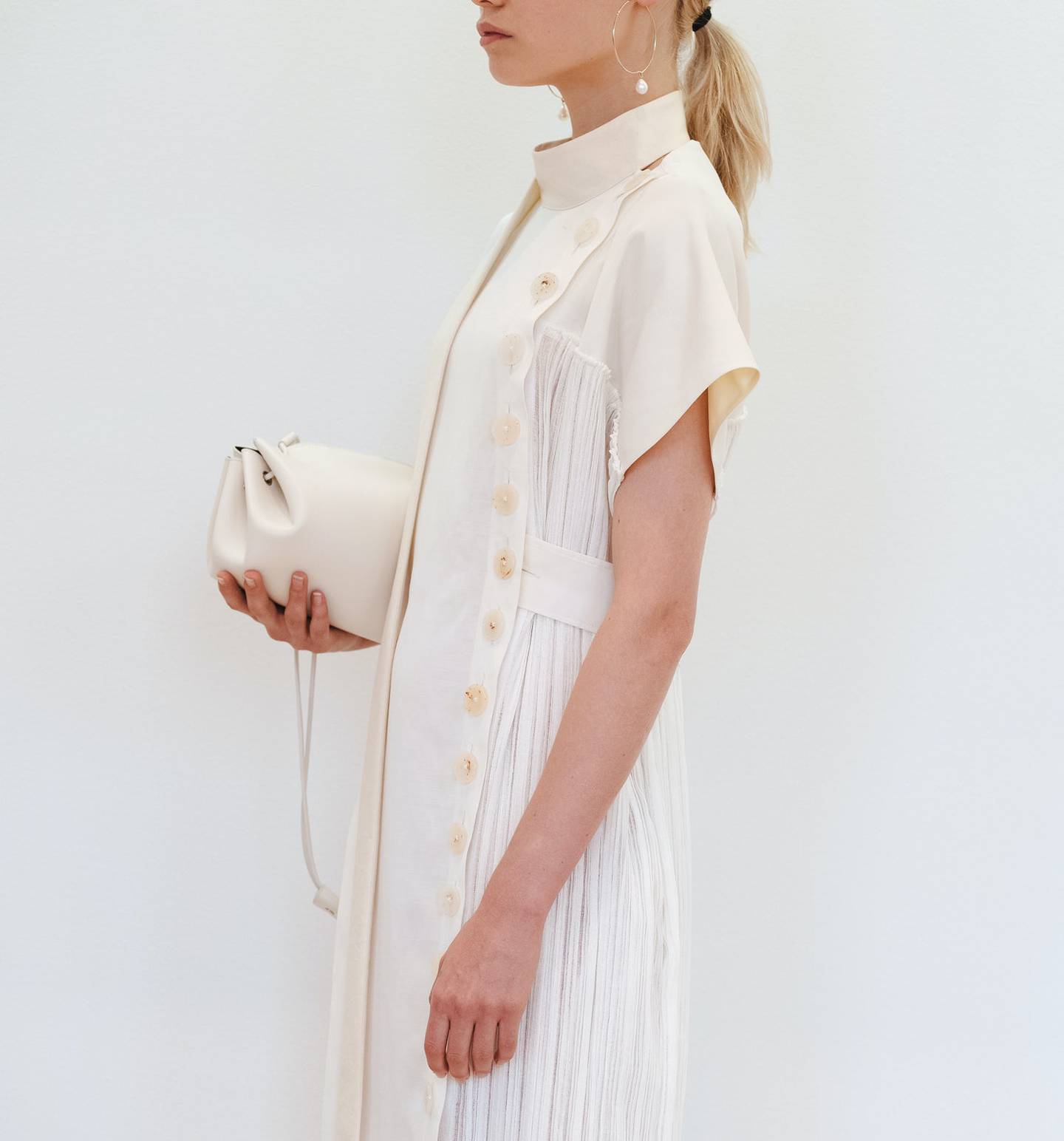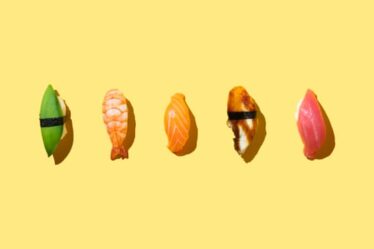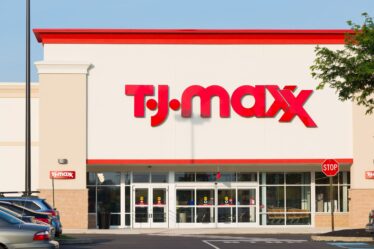
MILAN, Italy — Two years is a short time to measure a luxury brand’s turnaround in the hands of a new design team, but in today’s fashion climate of head-spinning change, it’s long enough to tell if there’s reason to keep following the plot. Lucie and Luke Meier, since becoming co-creative directors of the beloved but beleaguered house of Jil Sander, have already provided plenty of justification.
“It feels like a lot, but it also feels quite fresh to us,” said Luke Meier in a joint telephone interview with Lucie from their Milan headquarters last week, in advance of their Spring/Summer 2020 women’s runway show on Wednesday. “There’s a lot of room still to grow,” Lucie added.
In their first working role together, the married designers have won measured accolades from a fashion press that has grown all too weary of short-lived brand reinventions — particularly at this one, where the founding designer Jil Sander herself left three times over the course of two decades. Still, with the ambitious redesign of its flagship stores by British architect John Pawson, a new gallery-retail concept that opened this week in Milan and the upcoming launch of a directly operated e-commerce site in December, it is clear that the Meiers, who make a coolly glamorous couple, intend to leave their mark. With Chief Executive Axel Keller, they have brought a previously elusive sense of stability to the house, not only in terms of its collections and campaigns, but also with a business strategy focused on sustainable growth, full-price sales and restoring the label’s lustre in markets where Jil Sander had largely disappeared.
“This is not about a fast success,” Keller said in a separate interview the following day. “This is really about a long-term rebuilding of the brand.”
To be sure, the company that the Meiers joined in 2017 was far removed from the renowned house of minimalism Sander created in Germany in 1968 (the Jil Sander fashion label launched five years later in 1973), which was the subject of a major retrospective at Frankfurt’s Museum Angewandte Kunst last year. Rodolfo Paglialunga, the Italian designer who had been plucked from Vionnet to succeed Sander after her ill-fated second return to the brand from 2012 to 2013, had been well liked but his collections failed to gain traction, derided as being a bit “too Jil Sander.”
We are lucky that the vision of Lucie and Luke is matching both the customer expectation and the DNA.
In three years, sales had shrunk by roughly a third, down to 9 billion yen (about $83 million) for the fiscal year ended February 28, 2017 from 13.5 billion yen in 2014, according to annual reports released by Onward Holdings Co, the Japanese fashion company that acquired Jil Sander in 2008. Meanwhile, the company closed more than 40 of its stores, including prominent locations in the US and UK. In the year ended February 28, 2018, the last for which figures are publicly available, sales had improved to 9.6 billion yen, although that would not yet reflect the Meiers’ impact on sales.
Nevertheless, analysts have largely applauded Onward’s investment in the new creative directors. A report from Shared Research in Tokyo noted sales growth of Jil Sander in key markets in Europe resulting from a three-year strategy initiated in 2017 with what the report describes as an investment of 1 billion yen to enhance the label’s value.
“Jil Sander is a brand still with great awareness and well-defined style that remains highly recognisable as one of the best representations of minimalism in fashion,” said Mario Ortelli, managing partner of luxury advisors Ortelli & Co. “And while it went through many changes over the years, it can come back in my opinion. I don’t see the brand equity as having been destructed. It faded for a while, but it was not that bad.”
Keller declined to comment on current figures, but he said the business has grown since the Meiers’ arrival, especially in the wholesale channel and categories that have historically been less important for the brand, such as leather goods and shoes. Jil Sander’s Tangle bag, a simple geometric square with a thin braided shoulder strap, has been a hit, according to retailers, and the label’s menswear has been drawing new customers following the reintroduction of separate runway shows during Paris Fashion Week a year ago.
A sneak peak of the forthcoming Jil Sander Spring/Summer 2020 collection | Source: Piotr Niepsuj, Courtesy
While wholesale has grown significantly, the retail business has also remained flat despite the lower store count, said Keller, who joined Jil Sander as commercial director in February 2018 after holding similar roles at Balenciaga and Maison Martin Margiela for more than two decades. He was promoted to chief executive last October, succeeding Alessandra Bettari, who is now vice president of Onward Luxury Group, the European subsidiary of Onward Holdings. Jil Sander currently has 29 directly operated stores including outlets, plus 11 more that are operated as franchises, down from a total of 55 in 2018.
“The company has a very strong DNA and history,” said Keller. “In terms of strengths, there was and is a lot of loyalty from the end consumer towards the brand, and we are lucky that the vision of Lucie and Luke is matching both the customer expectation and the DNA.”
And in terms of weaknesses?
“They were exactly the same thing,” Keller said. “If you have a strong DNA and a strong history, it means that you have also a very linear way of developing things of distributing things. You really have to open the doors and see what is out there and find new ways to reach out to customers and business partners.”
In the week before their show, to be held in the courtyard of the Pinacoteca di Brera, Lucie described the office environment as “quite serene.” Like their designs, the Meiers bring a spirit of rigour to conversation that leaves little room for disorder. That trait is also reflected in their respective career histories that gave each of them a fanatical appreciation for detail. Lucie, 37, was raised in Zermatt, Switzerland, and worked in several luxury houses in Paris, including as head designer for Dior haute couture and women’s ready-to-wear, then interim co-head of design with Serge Ruffieux at Dior following the 2015 departure of Raf Simons (who, notably, also designed Jil Sander from 2005 to 2012). Luke, 44, originally from Vancouver, was the design director at downtown New York skater label turned streetwear behemoth Supreme and, in 2013, co-founded men’s label OAMC, where he remains creative director.
“Lucie and I have had parallel careers for quite a while, and whenever we exchanged information, whether from different creative directors or management, we noticed that every really great company had a red line of a thorough approach,” Luke said. “We both understood how far you should go in order to make something happen.”
Working as a team, and in the same city at the same time, first attracted them to the Jil Sander opportunity, but they realised that despite its more recent baggage, the label retains an abstract quality that they can redefine in their own way. To be sure, their aesthetic calls to mind the classic language of Jil Sander — crisp white shirtdresses and strictly tailored suits contrasted with more abstract designs with patterns more complicated than origami — but they have added their own sense of humour (vastly oversized bags, for one example) and more warmth than is typical found in icy minimalism. Because there are no archives, resulting partly from so many changes at the company over the years, the Meiers said they had no alternative but to look forward.
Lucie and Luke are no compromise. It is one direction.
“The brand is really elemental – I think that’s a good word for it – and very pure,” Luke said. “We search for a very high level of make and material, and we don’t compromise on that at all. Nothing is superfluous. It doesn’t have excess. But it’s still emotional and very much alive.”
“We want to make things that last,” added Lucie. “It’s really about the idea, the feeling, the emotion, not recreating a specific piece.”
Following positive reactions to their shows, prestigious retailers like MatchesFashion and Dover Street Market now carry their designs, some of them as new accounts. James Gilchrist, vice president of Comme des Garçons USA and Dover Street Market USA, said that the brand is doing so well at Dover Street Market stores in New York and Los Angeles that Jil Sander was offered a dedicated space on the 7th floor in New York.
“The current incarnation is very beautiful and strong and feels modern, while being very respectful to the codes of the house,” Gilchrist said. “It continues to resonate with clients who are looking for simple, elegant and impeccably made clothes. It’s a nice counterpoint to a lot of what’s going on in fashion now with the very loud, logo-driven and streetwear-inspired designs. It stands out by possessing wearability, functionality and a strong point of view.”
By all accounts, the Meiers have a gracious working relationship, often completing each other’s thoughts, and despite their obsessive approach to fine-tuning each product down to the weight and weave of cotton poplin, they demonstrate a remarkable level of productivity. Well, there are two of them. Beginning in October, they will add yet another joint role as the newly appointed chairs for fashion design at the University of Applied Arts Vienna, where they will simultaneously head the Fashion Master Class, replacing the outgoing chair, Hussein Chalayan.
“There’s something nice about being around young people that have this dreaming mentality,” Luke said. “And we love Vienna!”
We want to make things that last. It’s really about the idea, the feeling, the emotion, not recreating a specific piece.
Jil Sander’s performance has likewise benefitted by the introduction of several concepts and collaborations that address the shifting shopping habits of a younger generation of luxury consumers, said Keller. They offered a “7 Days” capsule of seven white shirts that grow gradually more relaxed each day (with prices ranging from $800 to $1,010 per shirt). A complementary collection called Jil Sander+ was introduced for fall with more casual components, reflecting the Meiers’ own outside interests in travel, skiing, snowboarding and yoga, including collaborations with Mackintosh on outerwear and accessories and a Japanese denim manufacturer for jeans. Some of those designs will remain available well beyond the immediate season, even permanently, Keller said.
“There is no need for that to be changed the next season, because after six months it’s still valid, and I hope after two years, it’s still valid, and it’s going to continue,” Keller said. “To have this message and to present to the client something that has a longer lifespan is something that is going to be extremely important.”
Jil Sander’s approach to retail, both online and off, is also changing — and includes an example that has at least an echo of Supreme, if not quite its system of weekly product “drops.” A small space that opened this week on the Via Sant’Andrea in Milan will change its offerings on a monthly basis around different themes and ideas, partly to test them out, but also to allow artists to interpret their designs and give consumers more insight into how rigorous their process can be. (The location was previously dedicated to the Jil Sander Navy sub-brand, which folded after the Spring/Summer 2019 season.) First, is an abstract display of down jackets from Jil Sander+, at least two of which will be added to the permanent offering. The Meiers describe it as “a place for experimentation.”
“It can be a space that is explanatory as well,” Luke said. “I’m fascinated by the way people are attracted to certain things and others slip through the cracks. In some ways, people find most of their information today through their phones, but I still get impacted by things I see going through my daily life. To stand in front of a piece, to be in an environment, gives such a different depth and feeling.”
Lucie added that Pawson’s flagship design, introduced in Tokyo’s Omotesando neighbourhood a year ago, projects calmness, with a large banyan tree as a surprising element of nature at its heart. “He right away understood the feeling we wanted to create,” she said. “We didn’t want to create a store that felt like a labyrinth, but a place where people wanted to stay and feel good. There is a lot of poetry in his work.”
We didn’t want to create a store that felt like a labyrinth, but a place where people wanted to stay and feel good.
A second Pawson design will be unveiled on October 1 in Paris with a complete remodel of the company’s store on Avenue Montaigne, followed by the renovation of the Milan flagship and the most important retail concessions in Japan in 2020. While the stores help present a clear picture of the brand vision, the challenge will be to translate that into the new e-commerce site being introduced in December. Keller said the launch will be a critical step for the brand. “We will have more flexibility on stock and replenishment,” he said. “There will be more content and the whole thing is going to be much more visible for us.”
Onward Luxury Group, in emails from Alessandra Bettari, described Jil Sander as a “key strategic asset” in which it continues to invest. The company is also in the process of separating production for its directly owned brands from those under license, such as Rochas and, until recently, Michael Kors. Its Florence plant will then be dedicated to Jil Sander and OAMC (OLG made an investment in the label in 2018) with a plan to modernise processes such as product development, quality control, logistics and information systems.
In some ways, Onward has proven to be a more suitable partner for a label like Jil Sander — given its comparatively small size among luxury brands and its strong customer base in Japan — than a European conglomerate or the private equity funds that owned the label in the years after it was sold by Prada in 2006. Still, Keller was reluctant to characterise the company’s ambitions for just how big Jil Sander could become.
“What we are looking at is to build a solid business between directly owned retail and wholesale,” Keller said. “There are a lot of opportunities in countries where we are currently not, but the focus is to build in the existing businesses. It is very important for us to become even stronger where we are currently.”
For their part, the Meiers said they don’t want theirs to be another short-lived chapter in Jil Sander’s history. “We want to push it even further,” Lucie said.
“What I think is really important is that they are as clear as possible,” Keller added. “Lucie and Luke are no compromise. It is one direction.”



